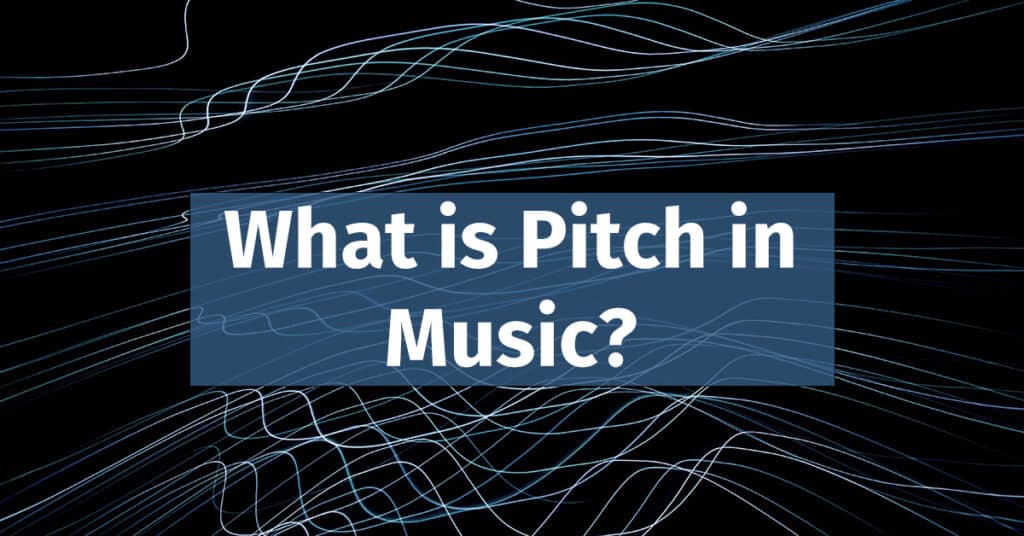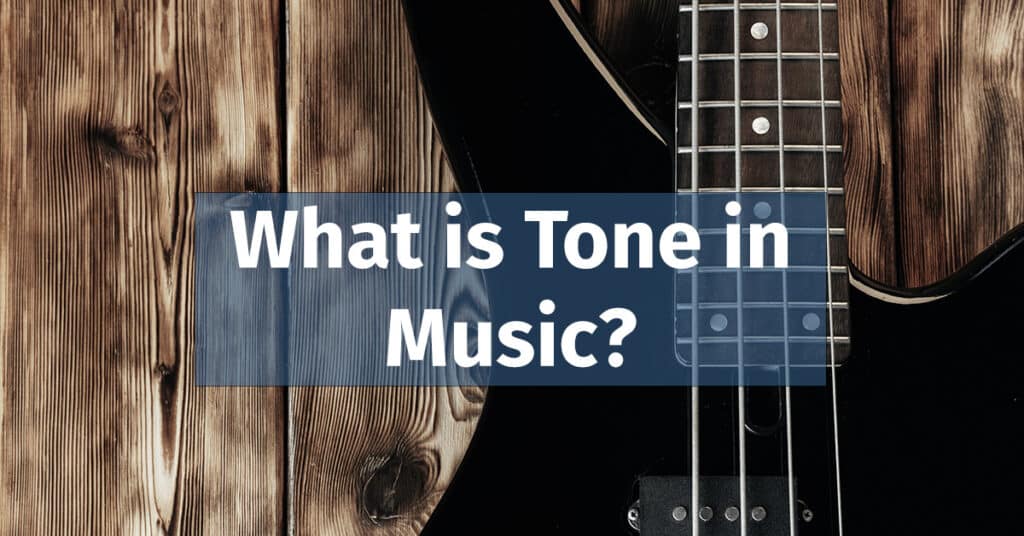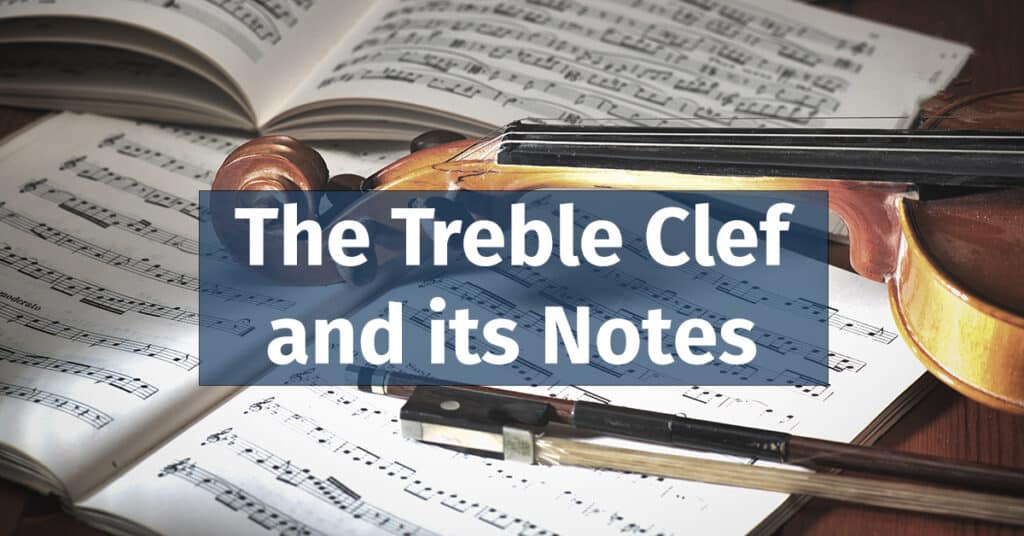Despite its seemingly straightforward nature, the concept of pitch in music can be somewhat elusive, leaving many wondering about its precise definition and significance.
In this article, we will shed light on the importance of pitch in music and strive to bring clarity to this essential musical element.
Introduction
To understand pitch, we can compare it to height in physical space. Imagine yourself standing at the bottom of a staircase. As you climb each step, you move higher and higher. Similarly, in music, pitch refers to the perceived “height” of a sound. Playing or singing notes with increasing pitch is like moving up the staircase, with each step representing a higher frequency sound.
Think of pitch as a way to describe how high or low a sound is. Lower pitches correspond to the bottom steps of the staircase, while higher pitches are found further up. Like the steps on a staircase, the difference in pitch between two sounds can be small or large, depending on the distance between the frequencies.
Through the following sections, we will explore the concept of pitch more in-depth.
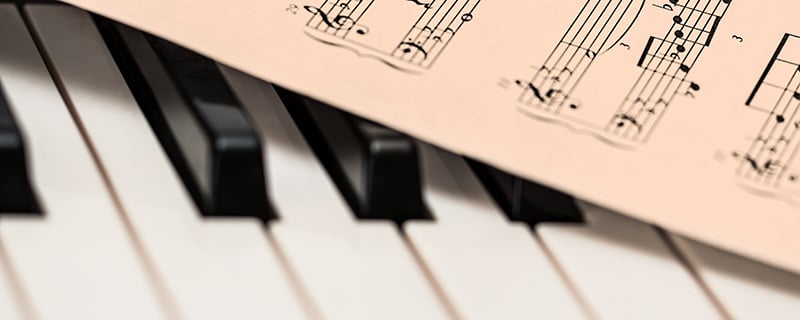
Understanding the Importance of Pitch
Understanding pitch is of utmost importance in music as it serves as the cornerstone for various elements such as melody, harmony, and more, which are integral to musical compositions.
Melody, often described as a series of musical tones that follow one another, heavily depends on the connections between pitches to generate expressive and unforgettable sound sequences.
Harmony is the art of layering multiple tones played simultaneously to construct chords and progressions of chords. This addition of harmony brings a new dimension to the music, contributing to its richness and intricacy.
Moreover, the significance of pitch extends to the formation of musical scales, which are structured arrangements of pitches that provide the foundation for constructing melodies and harmonies. Diverse cultures around the globe have established their unique scales, giving rise to a wide array of musical styles and expressions.
Recognizing the role of pitch in these essential aspects of music allows for a deeper appreciation and understanding of the art form.
Fundamentals of Pitch
Before diving deeper into pitch in music, it’s essential to grasp the fundamental concepts that form the basis of our understanding of pitch.
In this section, we will explore the definition of pitch in music, the relationship between pitch and frequency, and the role of octaves in differentiating pitches. These core principles will lay the foundation for further discussions about pitch in Western music, its perception, and its significance in various musical contexts.
Definition of Pitch in Music
Pitch is the perceived position of a sound from low to high.
Pitch refers to our perception of a sound’s position on a scale from low to high. The pitch we perceive corresponds to the fundamental frequency of the acoustic waveform produced by an instrument as it travels through the air. This frequency, measured in hertz (Hz), indicates the number of cycles the acoustic waveform vibrates per second.
Pitch and Frequency
When we hear a musical instrument, the sound we perceive results from the pressure created by the acoustic waveform it produces, which travels to our ears through the air. The higher the frequency of this pressure, the higher the pitch we perceive.
Consequently, pitch and waveform frequency are closely related, but pitch is also a subjective property influenced by psychoacoustics.
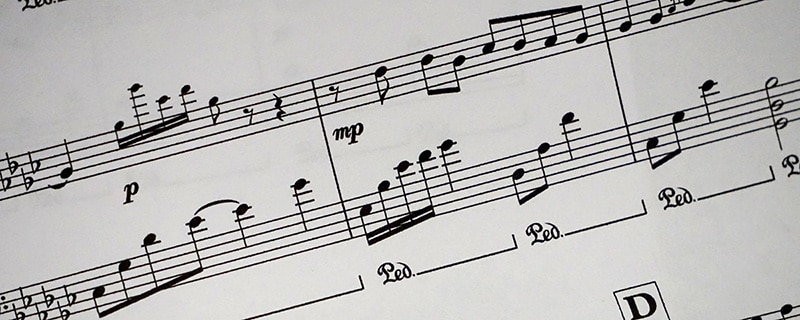
Fundamental Frequency
When a musical instrument produces a sound, it generates a complex waveform of multiple frequency components. These components include the fundamental frequency and various overtones (additional frequencies above the fundamental frequency), which create the overall timbre or quality of the sound.
The fundamental frequency is the lowest frequency in a sound, greatly influencing the pitch of a tone we perceive (the primary determinant of a note’s pitch). This frequency corresponds to the rate at which the entire waveform vibrates.
In musical terms, the fundamental frequency corresponds to the notes we hear and identify, such as C, D, or E. For example, if you play a middle C on the piano, the fundamental frequency will be approximately 261.63 Hz.
Pitch and Octaves
When we double or halve the frequency of a sound’s pitch, we perceive a similar sound but at a higher or lower level. Doubling the frequency results in a higher octave, while halving gives us a lower octave.
Consider the following three sounds with 250 Hz, 500 Hz, and 1000 Hz frequencies. These frequencies represent three distinct octaves. Despite their differing pitches, we perceive these sounds as similar due to their relative octave positions:

Scientific Pitch Notation
Scientific pitch notation (SPN), known alternatively as American standard pitch notation (ASPN) or international pitch notation (IPN), is a methodology that combines a musical note name and a numerical indicator of the octave. This system brings consistency and precision to how pitches are communicated, making it an essential tool for musicians worldwide.
In the SPN system, pitches are denoted starting from C0, corresponding to a frequency of 16.35 Hz. The octave number rises by one unit each time the scale ascends from B to the following C. This system designates “middle C” as C4, which sequentially follows B3.
One of the most valuable features of SPN is its ability to present potentially confusing frequency data in a clear and understandable textual form.
This is beneficial across various applications, including writing music for specific instruments and general discussions about music. Regardless of the tuning standard applied, a note represented by SPN—such as C4—always signifies the same position in the scale.
It’s important to clarify that while the designation “C4” remains constant under SPN, its actual frequency can vary depending on the tuning standard used. In the internationally recognized pitch standard (where A4 is set at 440 Hz), C4 equates to approximately 261.63 Hz.
In a different tuning standard, the frequency of C4 would change, but within the framework of SPN, it would still be referred to as “C4”. This adaptability underlines the effectiveness of SPN in maintaining consistent musical communication across different tuning systems.
Pitch in Western Music
In Western music, pitch plays a significant role in constructing melodies, harmonies, and the overall structure of musical compositions.
In this section, we will discuss how pitch relates to notes in Western music, how instruments produce different pitches, and the concept of transposition. These aspects will help you understand the practical application of pitch in the creation and performance of Western music.
Pitch and Notes in Western Music
There is an infinite number of pitches within the range of human hearing. Still, only a few specific pitches are commonly used in music, which can vary based on cultural differences.
In Western music, we mainly use 7 core notes, represented by the first seven letters of the alphabet: A, B, C, D, E, F, and G. This is known as the “musical alphabet.” Including sharps (#) and flats (♭) between some of these notes results in 12 pitches. These 12 distinct pitches recur at higher and lower octaves, expanding the range of available sounds.
The musical alphabet assigns simple names to the specific pitches, making it easier to write, remember, and communicate about the different pitches used in music.
Although we could identify a musical note’s pitch by its frequency in hertz, using these numbers to write and remember pitches would be challenging. Thus, each note is assigned a name from the musical alphabet for easy reference.
Some instruments, such as fretless stringed instruments (e.g., violin, viola), enable the player to transition from one note to another while producing all intermediate pitches. This flexibility allows musicians to explore various sounds and expressions in their performances.
Pitch Class in Western Music
When discussing Western music, you’ll often come across the term “pitch class.” It’s an important piece of the music theory puzzle.
But what does “pitch class” really mean? Simply, a pitch class groups all pitches of the same note name, spanning across various octaves. Take the pitch class “C,” for example – it comprises all “C” notes, no matter what octave they are in.
When we refer to a particular pitch class, we discuss a specific musical note – like A, B, C, D, E, F, or G, including their sharp or flat variants – without regard for its octave. This concept is vital to the twelve-tone equal temperament system, a tuning method widely embraced in Western music.
This system breaks down the octave into 12 equal segments, each representing a semitone and a unique pitch class. Understanding this idea is key to unlocking aspects of music such as chromaticism, atonality, and more intricate musical phenomena.
This somewhat abstract notion equips composers and music theorists with a lens to examine and dissect music deeper, focusing on areas like harmonic structure and the interplay between various pitches and chords.
Pitch and Instruments
An instrument’s range of pitches depends on various factors, including its size, design, and how it produces sound.
This section explains the relationship between pitch and instruments, offering insights into how different factors contribute to an instrument’s unique pitch characteristics.
- Size and pitch: Larger instruments produce lower frequencies because they move more air. In comparison, smaller instruments usually produce higher pitches due to the lesser amount of air moved and the resulting higher frequency. For example, a double bass or a tuba, being larger instruments, can produce lower pitches than a violin or a flute.
- Sound production and pitch: Different instruments produce sound through various methods, such as vibrating strings, air columns, or membranes. These mechanisms can significantly influence the pitch range of the instrument. For instance, string instruments can alter pitch by changing string tension, thickness, or length. In contrast, wind instruments use air columns of varying lengths to produce different pitches.
- Instrument families and pitch: Each family of instruments, such as strings, woodwinds, brass, and percussion, has its unique pitch range and characteristics. Within these families, instruments are often classified by their pitch ranges, such as soprano, alto, tenor, and bass instruments. For example, the violin has a higher pitch range in the string family than the viola, cello, or double bass.
- Pitch and playing techniques: Musicians can manipulate the pitch of an instrument through various playing techniques. For example, guitarists can use techniques like bending, sliding, or a capo to change the pitch of the strings. At the same time, wind instrumentalists can adjust their embouchure or air pressure to modify the pitch produced.
- Tuning and pitch: Proper tuning of an instrument is crucial to ensure that it produces the correct pitches for a given piece of music. Instruments like pianos and guitars require periodic tuning to maintain their pitch accuracy. In contrast, wind and brass instruments may need more frequent tuning adjustments due to temperature and humidity.

Pitch and Transposition
Transposition involves shifting a single note, a chord, or an entire piece of music to a different key while maintaining its original characteristics but at a different pitch. When notes are moved by an entire octave, this process is called octave transposition.
One reason to transpose a piece of music is to accommodate a singer’s vocal range. If a note is unreachable, the piece is transposed up or down by one or more semitones, allowing the singer to perform it comfortably.
Another common reason for transposition is to adapt a musical part for instruments that don’t play in concert key (or concert pitch). This adjustment ensures the music sounds harmonious across various instruments with different pitch ranges.
Pitch Modulation Techniques
Pitch modulation refers to the techniques used to vary the pitch of a musical note or sound, adding expressiveness and character to the music. These techniques can be applied to different instruments and styles and are crucial in shaping the musical texture.
In this section, we’ll explore some common pitch modulation techniques.
Vibrato
Vibrato is a technique in which the pitch of a note is rapidly and slightly varied, creating a warm, expressive sound. This modulation is achieved by oscillating the pitch around the central note, usually at a few cycles per second.
Singers and instrumentalists can produce vibrato, and it is widely used in classical, jazz, and popular music to add emotion and depth to a performance.
Portamento
Portamento, also known as glissando or slide, is a technique in which the pitch of a note smoothly transitions to another note without a distinct break.
This effect can be achieved on stringed instruments by sliding the finger along the string, brass instruments by adjusting the embouchure or using a slide, and synthesizers or electronic instruments by programming a glide between notes.
Portamento adds expressiveness and can create a sense of fluidity or connection between pitches.
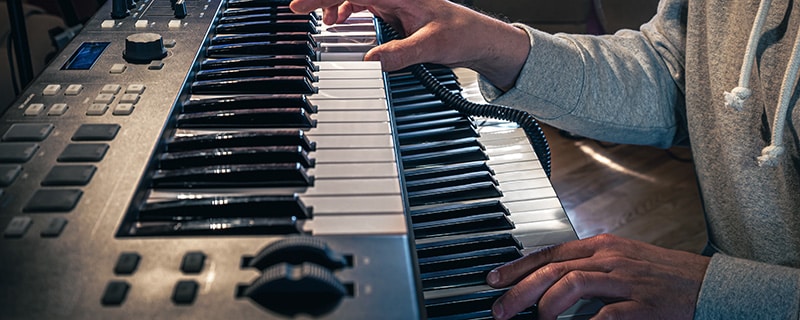
Pitch Bend
Pitch bend is a technique that involves smoothly changing the pitch of a note, often using a pitch bend wheel or lever on a keyboard or synthesizer.
This technique allows musicians to create expressive pitch variations that mimic acoustic instruments’ natural pitch fluctuations or create unique electronic timbres. Pitch bend is commonly used in electronic, pop, and experimental music, film scores, and sound design.
Pitch Shifting Effects
Pitch-shifting effects are a category of audio processing techniques that alter the pitch of a sound, often in real time. These effects can create harmonies, transpose music to a different key, or produce creative pitch-based effects. Examples of pitch-shifting effects include harmonizers, octave effects, whammy pedals, and pitch-shifting plugins. They can be found in various music genres, such as rock, electronic, and experimental.
- Harmonizers are a variant of pitch-shifting devices that blends the original signal with the pitch-altered version to produce a harmony consisting of two or more notes
- Octave effects units blend the input signal with a synthesized tone, an octave above or below the original, by doubling or halving the frequency, leveraging the two-to-one frequency relationship of notes separated by an octave
- Whammy pedals such as the DigiTech Whammy mimics the sounds produced by a guitar’s vibrato (“whammy”) bar, offering an expanded pitch range without the tuning issues common to traditional vibrato bars
- Pitch-shifting plugins for use in digital audio workstations (DAWs) provide a range of pitch-shifting capabilities, from subtle pitch correction to extreme pitch manipulation
Reference and Perception of Pitch
How we perceive and relate to pitch can vary depending on reference points, individual abilities, and cultural context.
In this section, we will explore the concepts of reference pitch, perfect pitch, relative pitch, concert pitch, and indefinite pitch. Understanding these different pitch perception and reference aspects will shed light on how pitch is experienced and utilized in music.
Reference Pitch
A reference pitch is a specific frequency used to tune an instrument. Today’s most widely used reference pitch is standardized as ISO 16 (ext. link) by the International Organization for Standardization (ISO). It corresponds to an audio frequency of 440 Hz.
Listen to the standard reference pitch of 440 Hz here:
Typical sources for reference pitch include a tuning fork, a U-shaped bar made of elastic metal, or another instrument that has already been tuned, such as a piano.

Most major digital audio workstations (DAWs) used for music production have built-in or third-party plugins to create reference tones or pitches. These tools make generating specific frequencies or notes easy, which can help with tuning instruments, sound design, audio effects, etc. For example, Steinberg Cubase Pro has a built-in TestGenerator plugin designed specifically for this purpose.
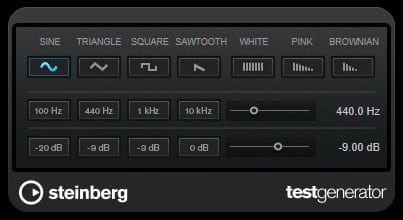
Perfect Pitch and Relative Pitch
A small percentage of individuals possess perfect pitch (also known as absolute pitch), which is the ability to sing or identify any pitch without relying on external instruments or previously heard notes for reference.
While this skill is impressive, it is not essential for playing or composing music. Many accomplished musicians and composers do not possess perfect pitch and rely on relative pitch, which is the ability to identify the relationships between notes and intervals.
Perfect pitch is believed to be a rare combination of genetic and environmental factors, as it is more common among individuals with a family history of the trait and those who began musical training at an early age.
Although perfect pitch cannot be developed through training, some exercises can help improve relative pitch and overall musical skills. Musicians can practice recognizing and identifying intervals, chords, and scales and developing their sense of rhythm and harmony.
These skills can contribute to a better understanding of music and enhance one’s ability to play, compose, and appreciate music, whether or not they have perfect pitch.
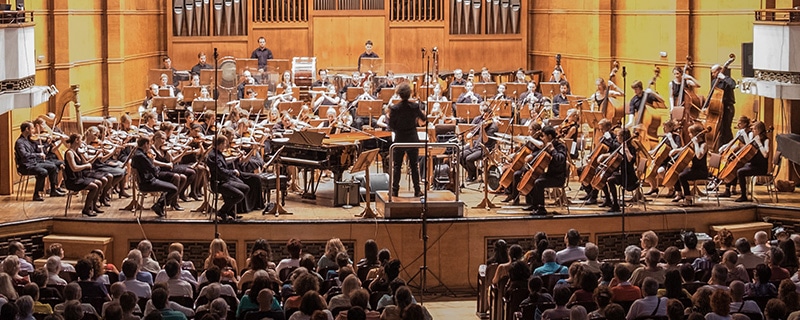
Concert Pitch
Concert pitch refers to the specific pitch to which musical instruments are tuned when playing together in a piece of music. Although it can vary, today’s most common concert pitch is the international standard pitch of 440 Hz, which is widely used by instruments like the piano.
Concert pitch is significant because some transposing instruments produce sounds with pitches that differ from those indicated in the sheet music. For example, the most common types of trumpet and clarinet play a whole step lower than the music written on the score.
Ensuring that all instruments are tuned to the same concert pitch helps maintain harmony within the ensemble.
Indefinite Pitch
As we discuss pitch, we must acknowledge that not all musical sounds fit neatly into a well-defined “height” or frequency. Some sounds are more ambiguous, with a less discernible pitch, and these are referred to as having an indefinite pitch. This means their frequencies are not easily associated with a specific note on a musical scale.
Indefinite pitch is often a characteristic of various percussion instruments, such as the cajon, maracas, and tambourine. When you play one of these instruments, the resulting sound contains a mix of numerous frequencies that don’t correspond to a single, identifiable note. Although the sounds may not be clearly defined as high or low pitches, they still play a crucial role in shaping a composition’s rhythm and texture.
It’s worth mentioning that an indefinite pitch doesn’t imply the complete absence of pitch. Instead, it signifies that the pitch is not easily recognizable or associated with a particular note.
Some percussion instruments, like the marimba, timpani, and xylophone, produce sounds with more apparent pitches, enabling them to participate in melodies and harmonies.
Psychoacoustics
Psychoacoustics is the study of human sound perception and the psychological processes involved. It plays a crucial role in understanding pitch perception and how our brains process pitch.
This field explores various phenomena, such as the nonlinear relationship between pitch and frequency (mel scale), the missing fundamental phenomenon, and auditory illusions like the Shepard-Risset glissando. Although this article does not delve into psychoacoustics, acknowledging its existence and impact on pitch perception helps comprehend the complexities of pitch in music.
Pitch Analysis and Manipulation
In professional music production, various tools and software applications are available to help you analyze and manipulate pitch, as well as other elements of sound and music.
In this section, we’ll introduce three popular pitch analysis and manipulation tools: Steinberg WaveLab, Celemony Melodyne, and iZotope RX. These tools often represent sound differently, enabling you to understand and interact with the audio in more detail.
Using tools like Steinberg WaveLab, Celemony Melodyne, and iZotope RX, you can analyze and manipulate pitch and other elements of sound and music in unique and powerful ways. Each tool offers a different approach to visualizing and interacting with audio, allowing you to choose the most appropriate method for your needs and workflow.
Steinberg WaveLab – Waveform
Steinberg WaveLab displays audio as a waveform, a visual representation of the amplitude of a sound wave over time.
In a waveform, pitch is indirectly represented through the density and spacing of the wave cycles. Higher-pitched sounds have more tightly packed wave cycles, while lower-pitched sounds have more widely spaced wave cycles.
Although the waveform view is not the most intuitive or precise way to analyze pitch, it allows you to quickly identify and edit various aspects of the audio, such as loudness, transients, and overall dynamics.
WaveLab’s primary focus is mastering and audio editing. However, the waveform view can still provide valuable insights into the structure and characteristics of your audio.
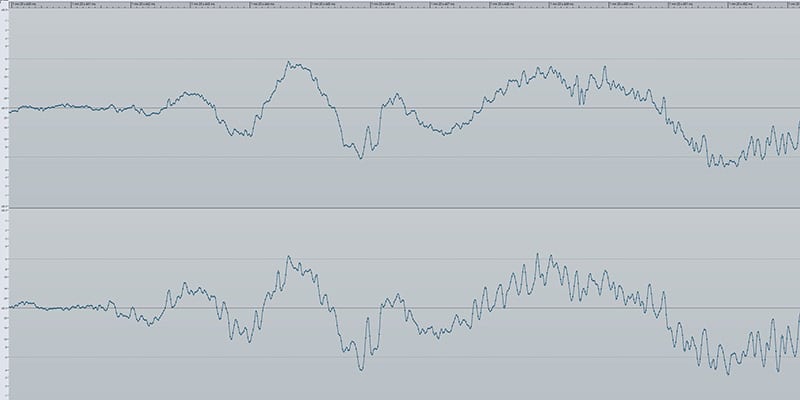
Celemony Melodyne – Pitch Blobs
Celemony Melodyne is a powerful pitch-correction and audio-editing software representing audio as “pitch blobs” on a piano roll interface. Each blob corresponds to a specific note or pitch, with the height of the blob indicating the pitch and the horizontal position representing the timing.
This unique visualization makes it easy to analyze and manipulate pitch, timing, and even individual harmonics within a piece of audio. Melodyne’s pitch manipulation capabilities are handy for correcting pitch issues, creating harmonies, and experimenting with pitch-based effects.
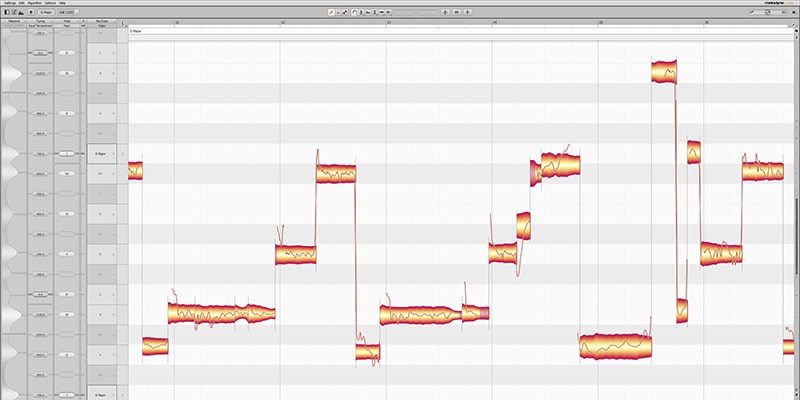
iZotope RX – Spectrogram
iZotope RX is an audio restoration and repair suite that displays audio as a spectrogram. A spectrogram is a visual representation of the frequency content of a sound over time, with the horizontal axis representing time and the vertical axis representing frequency.
The colors or intensity of the image indicate the amplitude of the different frequencies. In this representation, pitch appears as distinct horizontal lines or bands, with higher-pitched sounds appearing higher on the vertical axis and lower-pitched sounds appearing lower.
The spectrogram view allows you to easily identify and analyze pitch content and other frequency-related characteristics of the sound. With iZotope RX’s spectral editing tools, you can perform precise edits to address issues like noise, clicks, and other unwanted artifacts and creatively manipulate the frequency content of your audio.
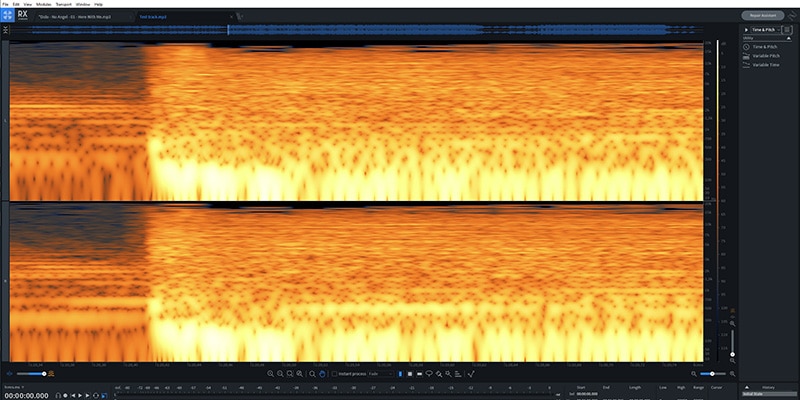
Other Meanings of Pitch in Music
While this blog post focuses on the technical and theoretical aspects of pitch in music, it’s worth noting that the term “pitch” has another meaning in the music industry context. “Pitching your music” refers to presenting or promoting your music to potential business partners, such as record labels or music supervisors.
This usage of the term “pitching” is distinct from the concept of pitch as a musical element, and it highlights the versatility of the term in different contexts within the music world.
So, What is Pitch in Music?
Pitch plays a vital role in music and can sometimes be a source of confusion. Throughout this article, we have explored the concept of pitch and its relationship with frequency, notes, transposition, and other aspects of music.
Additionally, we discussed various types of pitches, such as reference pitch, perfect pitch, concert pitch, and indefinite pitch. Understanding these concepts can deepen your appreciation for music and help you better communicate with other musicians.
